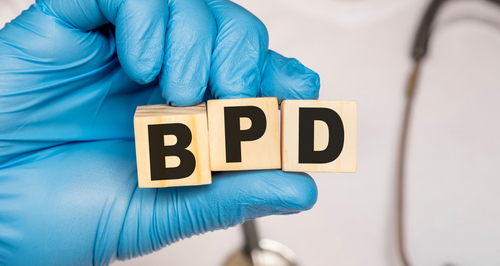Borderline personality disorder (BPD) is listed in the Diagnostic and Statistical Manual of Mental Disorders, Fifth Edition (DSM-5) as a chronic, mental disorder. As defined by the National Institute of Mental Health (NIH), “borderline personality disorder is an illness characterized by an ongoing pattern of varying moods, behavior, and self-image.” It is highly common for individuals with BPD to lack the ability to foster and maintain meaningful, lasting relationships. Although the cause of borderline personality disorder remains unknown, the NIH alludes to research that “suggests that genetics, brain structure and function, and environmental, cultural, and social factors play a role, or may increase the risk for developing a borderline personality disorder.”
There are a variety of symptoms associated with a borderline personality disorder that can be instantaneously triggered. Johns Hopkins Medicine explains triggers as “external events or circumstances that may produce very uncomfortable emotional or psychiatric symptoms, such as anxiety, panic, discouragement, despair, or negative self-talk.” Triggers can vary from person to person and can cause different physiological responses, including dissociation. A trigger, in relation to BPD typically refers to something that precipitates the exacerbation of one’s BPD symptoms. Examples of commonly reported BPD triggers that bring on dissociation can include, but are not limited to the following:
- Perceived or real abandonment
- Rejection of any kind
- Loss of a job
- Locations that invoke negative memories
- Reminders of traumatic events
- Ending a relationship
Dissociation is a highly common symptom experienced by individuals with BPD. Studies have found nearly 75% to 80% of people with borderline personality disorder report experiencing stress-related dissociation. The symptoms of BPD can pervasively interfere with an individual’s ability to function optimally in his or her daily life.
Dissociation
Dissociation is a psychological phenomenon that, according to the Australian Institute of Professional Counsellors, “describes a state in which the integrated functioning of a person’s identity, including consciousness, memory, and awareness of surroundings, is disrupted or eliminated.” Dissociation is specifically influenced by the disruption of four key areas (identity, memory, consciousness, and awareness of oneself and surroundings) of personal functioning that typically operate automatically and seamlessly.
The general symptoms of dissociation, according to a study published in Access Advances in Psychiatric Treatment, include changes in bodily senses and a reduced ability to react emotionally. The American Psychiatric Association (APA) provides examples of more severe symptoms of dissociation including perceptual alterations, emotional or physical numbing, distorted sense of time and space, unreal, unstable, or absent self, etc. An episode of dissociation can also cause an individual with BPD to feel as though their heart is pounding and/ or experience symptoms of light-headedness. The symptoms of dissociation can range from mild to severe, and last varied durations.
The information above is provided for the use of informational purposes only. The above content is not to be substituted for professional advice, diagnosis, or treatment, as in no way is it intended as an attempt to practice medicine, give specific medical advice, including, without limitation, advice concerning the topic of mental health. As such, please do not use any material provided above to disregard professional advice or delay seeking treatment.


